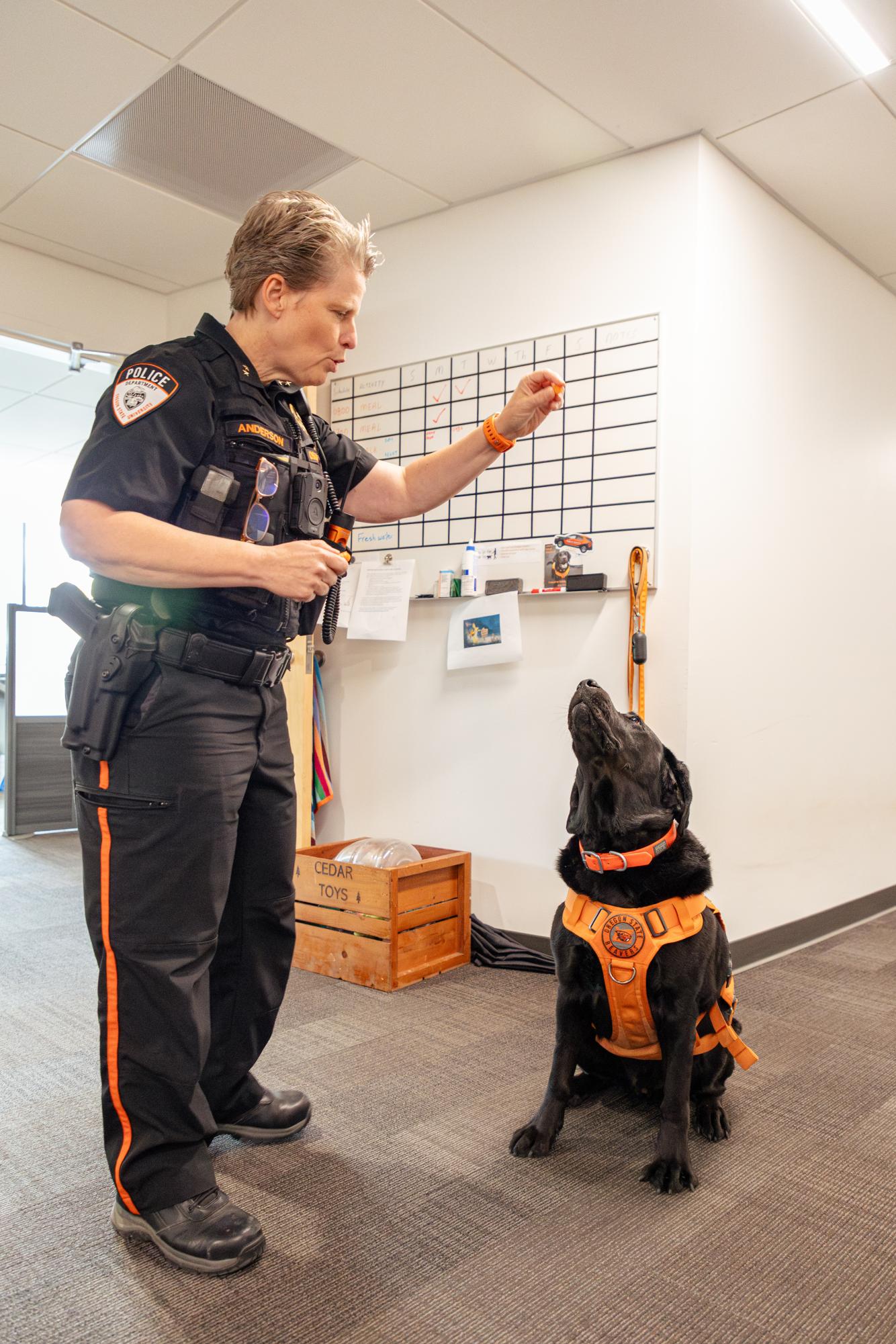For many incoming students, stepping onto a college campus for the first time is a significant milestone. With new experiences and responsibilities, one critical resource often overlooked is campus safety.
At Oregon State University, the Department of Public Safety plays an integral role in ensuring that students, faculty and staff are safe and supported at all times. From emergency response to community engagement, DPS is tasked with creating a secure environment where everyone can thrive.
Headed by Shanon Anderson, the associate vice president for Public Safety and the chief of police, DPS is not just about enforcing rules — it’s about being a proactive partner in the OSU community.
“In some ways we don’t differ (from standard police departments),” Anderson said. “We’re kind of limited by law, policy and best practice … but we have more resources that are student-centered.”
Despite these limitations, the presence of DPS officers on campus is a critical component of OSU’s safety strategy, according to Anderson. Their visibility and availability serve as a deterrent to crime and provide reassurance to the campus community.
Beyond emergency response and crime prevention, DPS offers a wide range of services designed to support the OSU community.
One of the most visible aspects of DPS’s work is their response to non-emergency situations. Whether it’s helping a student locked out of their dorm room or providing safety escorts late at night, Anderson said that DPS is here to assist the community.
“Sometimes people will need their car started for them, a bicycle is missing or a car has been broken into or some crime has occurred on campus and (DPS and OSU police officers) will go and investigate it,” Anderson said.
Students, faculty and staff can contact DPS in various ways. In case of an emergency, dialing 911 or calling the department’s emergency number, 541-737-7000, will connect them with the help they need.
For non-emergencies, such as getting into a locked building, the department can be reached at 541-737-3010.
If calling is not an option, Anderson notes that there are blue light phones scattered around campus. The phones are easy to use: Just one push of the button will get the student in contact with DPS.
While public safety officers can investigate small collisions, they lack the authority to make arrests.
“When a suspect is identified, that investigation would move over to a police officer, who can then make an arrest. Just like a police officer, they can send things over to student conduct, they can meet with individuals, they can give them safety briefings,” Anderson said.
As for the operations of DPS, the daily routine of public safety and police officers at OSU varies. Each day begins with a briefing, where officers receive updates on any incidents from the previous night and discuss strategies for the day ahead.
In addition to their regular duties, officers also provide security at campus events, such as graduation ceremonies and athletic contests, ensuring the safety of attendees.
Each fall, as a throng of new students arrive on campus, DPS faces the challenge of educating them about campus safety protocols. Part of creating a comfortable atmosphere on campus is Cedar, a beloved member of the DPS team.
“Cedar is a health and wellness dog. Internally, he is here for our officers. He is a member of our family,” Anderson said.
The black lab’s presence at campus events is always met with enthusiasm, and his friendly demeanor makes him a celebrity on campus.
As incoming students get ready to settle into campus life for the fall term, Anderson provided advice on what they can do if they find themselves needing assistance: “Look around, be aware and know that it is okay to call if you need help.”











































































































